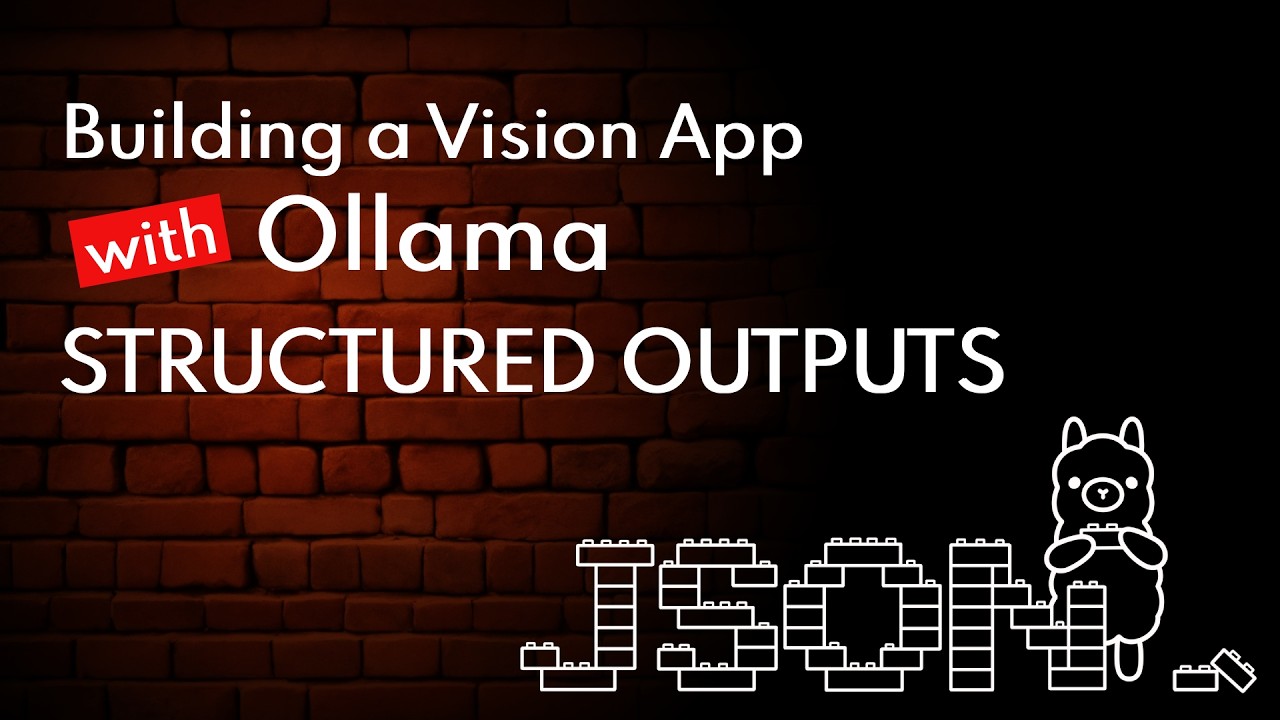The video introduces the new structured outputs feature in the Ollama framework, allowing developers to use Pydantic classes in Python for more organized data extraction from models, particularly in tasks like entity recognition and image analysis. The presenter demonstrates building a mini app that extracts track listings from album covers, showcasing the practical applications of structured outputs while encouraging viewers to experiment and optimize their models.
In the video, the presenter discusses the recent addition of structured outputs to the Ollama framework, which enhances the functionality of their models. Previously, users could utilize adjacent mode, but it often fell short of delivering precise results. The new structured outputs allow developers to define classes using Pydantic in Python, enabling a more organized way to manage outputs. The presenter aims to demonstrate this feature through code examples and by building an application that utilizes a vision model to extract text and information from images, specifically focusing on album covers.
The video emphasizes the simplicity of using structured outputs for tasks such as entity extraction and image description. The presenter showcases how to set up a basic class for Named Entity Recognition (NER) that can identify organizations, products, and people from text. By running various models, the presenter illustrates the variability in results, highlighting the importance of fine-tuning and experimenting with different models to achieve better accuracy. The structured outputs facilitate a more systematic approach to data extraction, making it easier to validate and manipulate the results.
Next, the presenter explores the capabilities of the vision model by analyzing images of books. By using a custom prompt, the model is tasked with describing the contents of the image, including identifying book titles and authors. The results demonstrate the model’s ability to recognize and extract relevant information, although the presenter notes that further refinement of prompts could enhance accuracy. This segment showcases the versatility of structured outputs in handling complex data extraction tasks from visual inputs.
The video then transitions to a practical application where the presenter builds a mini app to extract track listings from the backs of album covers. By employing structured outputs, the app is designed to read and transcribe text from images, providing detailed information about the albums and songs. The presenter highlights the importance of including descriptions in the output fields to improve the model’s performance. The app processes multiple album covers, generating markdown files that contain the extracted information, demonstrating the practical utility of the structured outputs in real-world scenarios.
In conclusion, the presenter encourages viewers to experiment with structured outputs and fine-tuning models to optimize their performance for specific tasks. The ability to run models locally without relying on external APIs enhances privacy and control over data processing. The video serves as a guide for developers looking to leverage the new features in Ollama, emphasizing the potential for creating efficient applications that can handle various data extraction tasks effectively. The presenter invites feedback and shares enthusiasm for seeing how others utilize these advancements in their projects.
